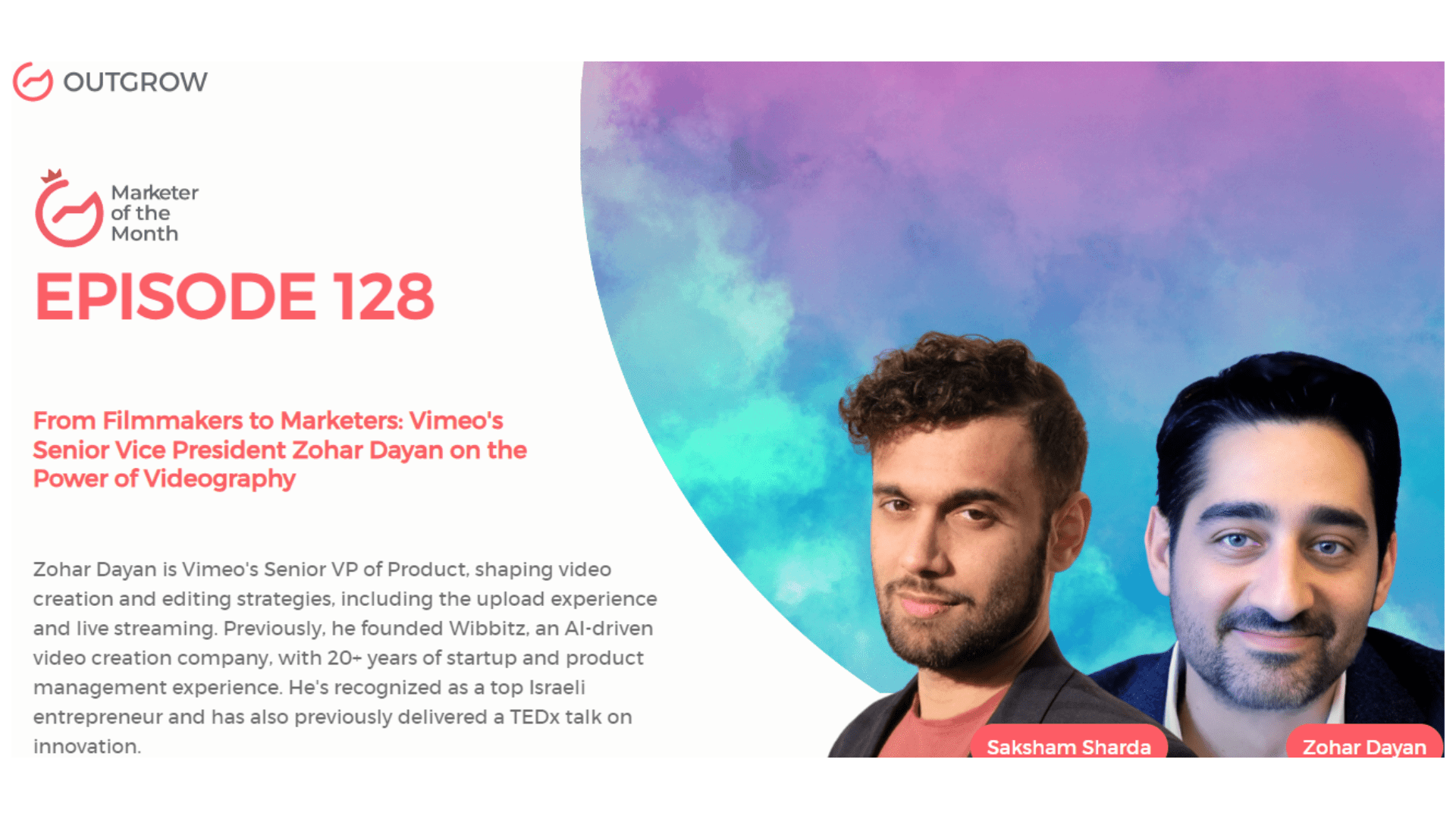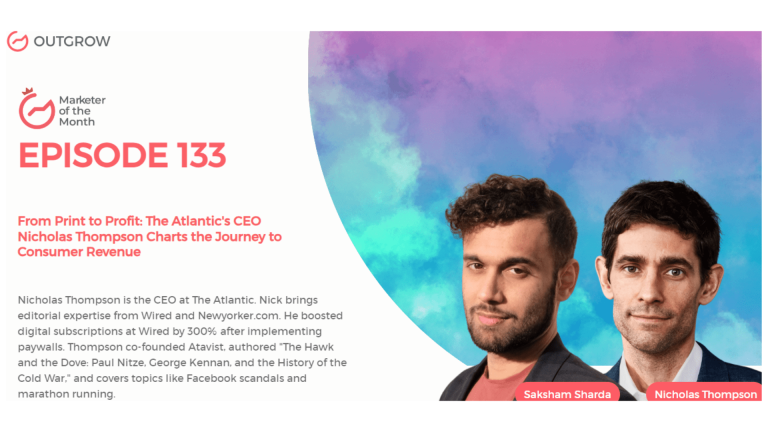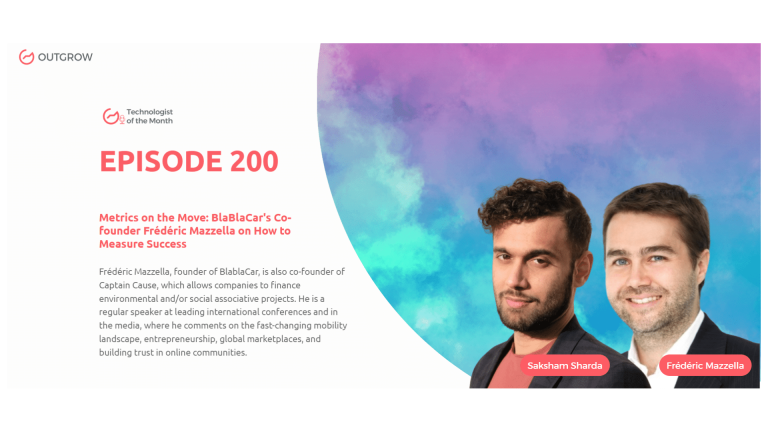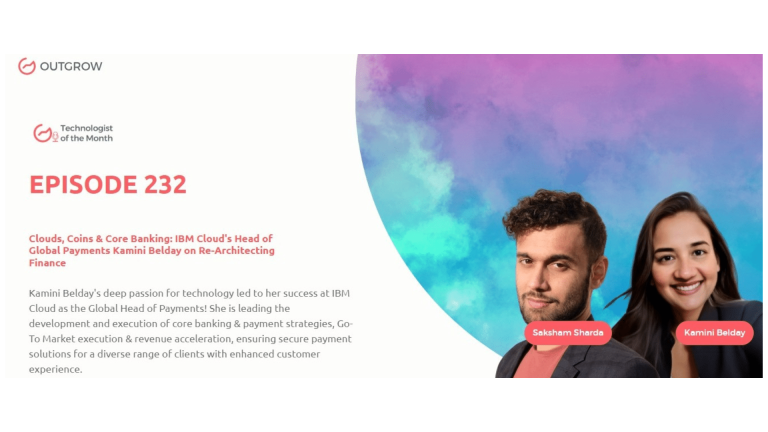EPISODE 128: Marketer of the Month Podcast with Zohar Dayan
Table of Contents
Hey there! Welcome to the Marketer Of The Month blog!
We recently interviewed Zohar Dayan for our monthly podcast – ‘Marketer of the Month’! We had some amazing insightful conversations with Zohar and here’s what we discussed about-
1. How interactive videos, including hotspots and branching, enhance user engagement.
2. Why Vimeo stands out as an all-in-one video platform, offering creation, editing, collaboration, analytics, and hosting tools.
3. Creative Magnet: Vimeo’s history as a creative hub attracts filmmakers and sets high content quality standards.
4. Video Innovation: Vimeo is dedicated to simplifying video creation with AI-driven tools like one-take editing.
5. How Generative AI makes video creation accessible.
6. Broad User Focus: Vimeo serves diverse users, from marketers and businesses to individuals seeking effective video communication.
About our host:
Dr. Saksham Sharda is the Chief Information Officer at Outgrow.co. He specializes in data collection, analysis, filtering, and transfer by means of widgets and applets. Interactive, cultural, and trending widgets designed by him have been featured on TrendHunter, Alibaba, ProductHunt, New York Marketing Association, FactoryBerlin, Digimarcon Silicon Valley, and at The European Affiliate Summit.
About our guest:
Zohar Dayan is Vimeo’s Senior VP of Product, shaping video creation and editing strategies, including the upload experience and live streaming. Previously, he founded Wibbitz, an AI-driven video creation company, with 20+ years of startup and product management experience. He’s recognized as a top Israeli entrepreneur and has also previously delivered a TEDx talk on innovation.
From Filmmakers to Marketers: Vimeo’s Senior Vice President Zohar Dayan on the Power of Videography
The Intro!
Saksham Sharda: Hi, everyone. Welcome to another episode of Outgrow’s Marketer of the Month. I’m your host, Dr. Saksham Sharda, and I’m the creative director at Outgrow. co. And for this month we are going to interview Zohar Dayan, who is the Vimeo’s Senior VP of Product.
Zohar Dayan: Great to be here. Thank you.
Don’t have time to read? No problem, just watch the Podcast!
Or you can just listen to it on Spotify!
The Rapid Fire Round!
Saksham Sharda: Alright, so we’re going to start with the rapid fire round. At what age do you want to retire?
Zohar Dayan: 65.
Saksham Sharda: How long does it take you to get ready in the morning?
Zohar Dayan: 15 minutes.
Saksham Sharda: Most embarrassing moment of your life?
Zohar Dayan: I don’t know. Pass.
Saksham Sharda: Favorite color?
Zohar Dayan: Blue.
Saksham Sharda: What time of day are you most inspired?
Zohar Dayan: Evening.
Saksham Sharda: How many hours of sleep can you survive on?
Zohar Dayan: Six.
Saksham Sharda: Fill in the blank, an upcoming marketing trend is ______.
Zohar Dayan: Authentic communication.
Saksham Sharda: The city in which the best kiss of your life happened?
Zohar Dayan: New York.
Saksham Sharda: Pick one, Mark Zuckerberg or Elon Musk?
Zohar Dayan: Elon Musk.
Saksham Sharda: The biggest mistake of your career?
Zohar Dayan: Not consulting enough people early on in my career.
Saksham Sharda: How do you relax?
Zohar Dayan: Meditate.
Saksham Sharda: How many cups of coffee do you drink per day?
Zohar Dayan: Three.
Saksham Sharda: A habit of yours that you hate?
Zohar Dayan: I don’t know. Pass.
Saksham Sharda: The most valuable skill you’ve learned in life?
Zohar Dayan: Creativity.
Saksham Saksham: And the last one is your favorite Netflix or HBO show or any OTT platform?
Zohar Dayan: Ted Lasso.
Saksham Saksham: The last song you have been listening to?
Zohar Dayan: Queen don’t stop me now
Saksham Saksham: The last movie that you watched that you liked?
Zohar Dayan: Coda.
Saksham Sharda: Okay so you’re very much of an Apple TV fan, there’s also an Apple TV all right. So we can go on to the long questions and before we go into the long questions is there any one of the rapid-fire questions you want to elaborate on in more detail or do you want to just move on to the long ones?
Zohar Dayan: I think maybe the creativity part.
Saksham Sharda: The most valuable skill you’ve learned in life is creativity. Could you tell us more about that?
Zohar Dayan: I think creativity is one of the most important skills that I’ve gained in my life. I think it’s one of the most important tools for being an entrepreneur, being a business person, and being a technology leader. And I think all of us can implement creativity in our day-to-day to solve problems and tell more compelling stories in every single challenge that we tackle.
The Big Questions!
Saksham Sharda: I’m gonna move on to the bigger questions now. So as the senior vice president of product at Vimeo, can you provide an overview of your role and responsibilities in leading the development and strategy of video creation and editing products?
Zohar Dayan: At Vimeo, I lead all of our video creation and editing products. So basically a great way to think about it is all of our tools that enable users to go from having no video to having a video on the platform. So everything from the upload experience to Vimeo, which is one of the most common actions performed on the platform today, to creating videos from scratch using our video creation tools, editing videos that you’ve either created on the platform or uploaded, adding a layer of interactivity on the videos to make those videos more engaging and more immersive. A lot of fantastic use cases for that we’re seeing. And all of our live streaming and live events tools as well.
Saksham Sharda: And so what are some of the ways in which they’re becoming interactive for the videos?
Zohar Dayan: We’re seeing really amazing use cases for interactive videos, whether it’s adding basic things like hotspots and links on videos all the way through video branching and kind of choose your own journey or choose your own destiny type of videos with advanced branching. And interesting things around shoppable videos as well. And I think the most interesting thing with interactive videos, it’s really a new medium to engage users through video in a much more engaging type of manner. And we’re seeing really interesting use cases across the board for all the different examples that I mentioned before, whether it’s for learning and development videos, marketing videos, campaigns, and even at Vimeo, we use interactive videos for our investor calls and quarterly updates, which is pretty cool. And I think it’s a much more interesting way to watch a video, the fact that you can double click into things, whether it’s to open overlays with additional information, open documents, open links, or jump to different points in the video, depending on what you want to watch. It really makes video much more than just a linear experience you can basically just jump around and click on what interests you exactly at that moment and watch only that part or only those parts that are interesting for you.
Saksham Sharda: So how would you say Vimeo differentiates itself in the competitive landscape of video creation and editing platforms? What unique features or functionalities does Vimeo offer?
Zohar Dayan: Vimeo really offers an end-to-end video platform. It really has everything that one needs to be successful with video, all the way from the video creation, editing videos, collaboration around videos with your team, engaging users, analyzing how those videos perform using advanced analytics, and it really is a place where you can branch out all those videos from one single place. I think that no other platform has the level of sophistication of tools that we have, and none have it all in one place. We’re seeing a lot of different point solutions around videos, specifically around creation or specifically around video hosting, but none that really compares in having everything in one place, and in that sense we’re really creating what we call a video experience platform.
Saksham Sharda: Now, if Vimeo has been the choice for a lot of budding filmmakers and a lot of film creators, what is the success behind Vimeo getting this audience?
Zohar Dayan: I think that’s part of Vimeo’s DNA. That’s how we got to this point today. Creative professionals, filmmakers, directors, found Vimeo as a home for their videos. I think that also kind of sets the bar for us as a company in terms of the standard and level of quality that you can expect from the platform and the type of content that you can find on it. And it’s part of our DNA today. Everything that we do, everything that we ship, and everything that we want our product to convey really reflects that high level of quality and standard that I think was set initially by that very creative industry and creative people that helped make Vimeo what it is today.
Saksham Sharda: So what is the future like? Can you share some insights into the latest innovations or developments in video creation and editing that you and your team have been working on at Vimeo?
Zohar Dayan: So we’re constantly raising the bar when it comes to all of the etools that we provide our users. I think that one of our key themes is really making a much more connected product and seeing how we can leverage the different parts of the platform to really empower users to get started with video in a much easier way. Removing those blockers, removing those barriers to entry, I think there’s no question today in anybody’s mind, especially after the past few years that we went through that video is the future. Whether you’re an individual, a creative professional, a business, whether you’re a marketer or somebody who’s in charge of employee communications or even an executive at a company, everybody needs to communicate with video, but we also know that many people find that pretty intimidating. It’s not that very trivial for people to immediately jump on board, get started with creating video. It sounds like something that would be a bit more challenging and complicated and something that is for the video professionals to do. And we’re saying, no, anybody can do it. And I think bringing those barriers down, that’s a huge part of what we’re doing. And it’s a huge emphasis on some of the really exciting things that we’re working on today, which also leverage AI.
Saksham Sharda: So could you tell us more about the way this generative AI fits into Vimeo’s larger product strategy, and what can we expect in the future?
Zohar Dayan: So AI is not something that’s new to Vimeo. It goes back to previous acquisitions that we did with Magisto and Wibbitz, which were automated video creation tools based on AI. So it’s something that we’ve been heavily investing in for the past few years. And we really believe that AI has the power to lower those barriers of entry for anybody to get started with video. So one of the most exciting things that we’re launching now is what we call one-take editing. And what it means is basically that anybody can get started with video communication. So you can record your video, communicate through video in a much easier way. And it starts with our record studio. It’s a brand new experience to record video messages and video communication, which leverages AI throughout the process. So it starts with an AI script generator. So you can ask the AI to help you write your script. So it’s kind of like having your own personal speech writer. We know that even the president of the United States has a speech writer. So now everybody can have one. And it’s something that really solves writer’s block. We believe that there is kind of like that blank canvas problem that anytime you wanna get started with something if you’re staring at a blank canvas, it’s really hard to get started. So the AI script generator really helps you kind of get through that first hurdle in your creation process. So once you have that script, you can open it up in a teleprompter, which is a cool little tool that you can see your script that was generated through the AI, and record your video. And you don’t have to worry about messing up throughout the video. It’s very intimidating. We all make mistakes throughout the video, but once you understand it, understand what’s coming next in the product, you don’t have to worry about it. That’s why we call it one-take editing. Once you’re done with your recording, you land on our brand-new text-based video editor. So basically we transcribe the video. Everything that you said is written. You see it on the side, beside your video, and you can automatically, magically remove all of the gaps and filler words like ____ and ____, which we all say. I say it many times, even in this interview. And it’s really an amazing tool to clean up that video and make it much more polished. And those moments that you did mess up, you can just highlight them and delete them. So it’s basically enabling users to edit a video just like they would edit a Word document, which is pretty amazing to continue.
Saksham Sharda: So which of the demographics that you plan to also reach out to because of this innovation? What are the demographics that you’re aiming for?
Zohar Dayan: So we believe that these tools could really help anybody communicate with video better. We’re seeing a lot of interest and excitement coming from the marketing community, internal communications, executive communications, and even individuals that want to get their message across through video.
Saksham Sharda: Okay, so in your experience, what are some key considerations or challenges when developing interactive videos, live streaming capabilities, and virtual event platforms, which is I guess the other innovative side except AI?
Zohar Dayan: So I think when it comes to video, it’s really about making it easy. Traditional video tools are inherently complex. If you didn’t go to film school and kind of studied how to use these advanced tools, it’s really hard to get started. So our goal is to really enable users to create sophisticated high-end premium content using very intuitive tools, whether it’s interactive videos, live events, or even short-form videos for social media. I think one of the main challenges today is also taking long-form content and cutting it up and repurposing it into smaller, shorter pieces of content that you can share on various channels. And that’s where we see a lot of the value of bringing these tools together. When it comes to life, I think that’s something that you can’t really, it’s a no fail type of product. You have one chance to get it right, and I think that we provide one of the most, if not the most stable and reliable platforms to manage video streaming and video events, which we all know are very high stakes in terms of resources, time, effort, and getting it right at the moment.
Saksham Sharda: So we did some digging into your past in your TEDx talk on breaking old habits to inspire innovation. What are some practical strategies or approaches you have found effective in fostering a culture of innovation within your teams?
Zohar Dayan: I think the best way to foster a culture of innovation is to have people on your team constantly ask why we are doing something, and ask it about every single thing and initiative that we work on. We often get wrapped up in the day to day and just go with the force of inertia. And I think that it’s really important to be able to ask those questions and understand why we’re doing, what we’re doing, or why things are the way they are. And I think combining that with a certain way of creative thinking, you can really come up with new and innovative ideas that really change the paradigm. You shared some success stories for case studies of companies that have effectively harnessed Vimeo’s products for their marketing or employee communication efforts. So today, the world’s leading companies use Vimeo for their video communications, whether it’s SMB type of companies that use Vimeo to create and market their brand, all the way to Fortune 500 companies that leverage Vimeo to host town halls, to engage their users, to use it for ace in communication. There are just so many different ways to leverage the platform today. For any type of business, no matter the size. And we’re seeing pretty much any company that you can think of has a Vimeo account and is actively using it to engage customers or employees through video.
Saksham Sharda: And is there any particular company or small business or medium-sized business that has an interesting story that you’d like to tell about how they transform something or any interesting campaign?
Zohar Dayan: I don’t know if I can mention any of the companies.
Saksham Sharda: How do you ensure the security and privacy of video content on Vimeo’s platform, especially considering the sensitive nature of some corporate communications?
Zohar Dayan: We adhere to the most strict privacy and security levels and compliances. We even recently actually hired a new chief information security officer, Mark Carter, to join the team. So we treat it to the highest level that we can.
Saksham Sharda: How does Vimeo approach accessibility and inclusivity in its video creation and editing products to ensure they can be used by a wide range of users?
Zohar Dayan: So we try to make all of our products accessible through accessibility standards. And I think by nature, just having a product that is video makes content by definition more accessible. The fact that we also transcribe all the videos, and make them searchable is something that I think really helps anybody gain access to more information in an easier way.
Saksham Sharda: Alright, so the last question for you is of a personal kind. What would you be doing in your life if not this right now?
Zohar Dayan: If I wasn’t working at Vimeo or I wasn’t in technology, I would probably be a professional organizer, kind of like Marie Kondo.
Let’s Conclude!
Saksham Sharda: Thanks, everyone for joining us for this month’s episode of Outgrow’s Marketer of the Month. That was Zohar Dayan, who is the Vimeo’s Senior VP of Product.
Zohar Dayan: Pleasure. Thanks for having me.
Saksham Sharda: Check out the website for more details and we’ll see you once again next month with another marketer of the month.
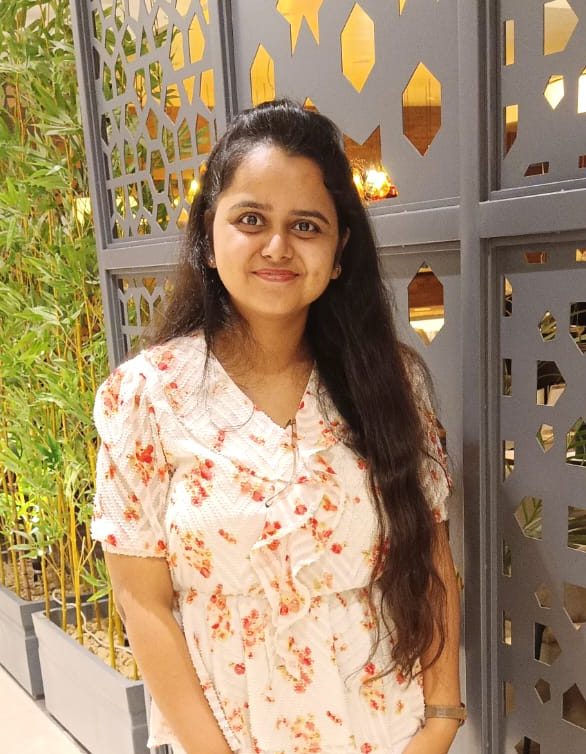
Muskan is a Marketing Analyst at Outgrow. She is working on multiple areas of marketing. On her days off though, she loves exploring new cafes, drinking coffee, and catching up with friends.

